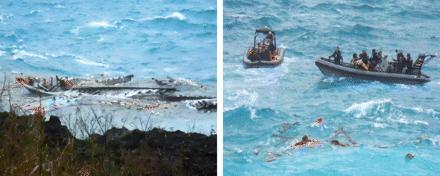Vacationing Turns to Volunteering After Refugee Boat Breaks Apart
Abstract
"I'm a traveler," said Jagannathan Srinivasaraghavan, M.D., a professor emeritus of psychiatry at Southern Illinois University.
But travelers sometimes get more than they bargain for, as Srinivasaraghavan found as he was checking another geographic entity off his life list of must-see places. He has visited 190 of the 194 nations of the world and is working to get to them all.
He won't soon forget his brief visit to Christmas Island, a 52-square-mile dot of land belonging to Australia in the Indian Ocean, 220 miles off the coast of Indonesia. The island is best known for an annual mass migration of 100 million red crabs, an 800-bed government detention center, and temporary staging point (and often a goal) for asylum seekers trying to enter Australia.
Srinivasaraghavan arrived on the evening of December 14, 2010, went to sleep in the local guest house, and woke up early the next morning to the sound of a heavy rainstorm and a lot of shouting. Stepping outside, he saw a large wooden boat drifting through high waves toward the rocky coast below.
On board were refugees from south Asia trying to reach Australia.

Left: Wooden boat carrying 100 asylum seekers to Christmas Island in the Indian Ocean is swamped by heavy seas and begins to break up. Right: Australian Navy seamen maneuver trying to rescue asylum seekers as their boat drifts toward the rocky shore of Christmas Island.
As he watched and took photographs, the boat began to break up. Islanders tossed life jackets to passengers. One man leaped unharmed to shore. Others were not so lucky. Only 42 of the boat's estimated 100 passengers survived, aided by Australian sailors in lifeboats.
Srinivasaraghavan had worked in Sri Lanka with victims of the 2004 Indian Ocean tsunami, and he volunteered at the local hospital to help the Christmas Island survivors, but added assistance was unneeded when it became clear that there would be more dead than injured.
Srinivasaraghavan's planned visit to the asylum center was cancelled because of the disaster.
Several of the civilians on shore were distraught afterward, frustrated by their inability to help the victims and by the sight of passengers disappearing in the sea, he said.
"The island will have to deal not only with the trauma of the survivors, but also with the emotions of the people who tried to help them," he said.



